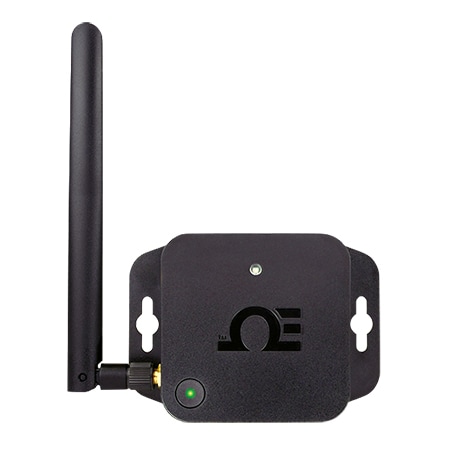Industrial Internet of Things or IIoT is a prerequisite for industries looking to embrace digital transformation. It is through this connected ecosystem that businesses gain increased visibility in their processes, ensure equipment uptime, perform predictive maintenance, and increase productivity and profitability. However, realizing these benefits through smart factory initiatives is more challenging than it may seem. The most common obstacle is collecting operational data from legacy machines and communicating that data to the cloud.
These older assets were designed 20-50 years ago and had limited capabilities to collect data and connect to a network. However, legacy systems are an inherent part of most industrial setups. Unlike a typical IT infrastructure that gets replaced every few years for improved capabilities and security, industrial equipment and machines often have a longer lifespan.
Replacing these systems entirely means investing millions in setting up new equipment, supply chain management, process improvement, and operator training. It is impractical than to build new plants with native IIoT technologies altogether. One of the ways to migrate legacy systems to the IIoT ecosystem is going for vendor-supported upgrades or custom IIoT integration. However, these are often costly and difficult to scale.
Thanks to recent advances in computing hardware and new types of sensors, there is a low-cost alternative to this upgrade, which allows you to implement IIoT initiatives to improve factory performance and stay competitive. These technologies readily integrate with legacy equipment and its components such as PLCs, control applications, and embedded sensors, and offer communication through legacy protocols. This feature extends the capabilities of your legacy systems, improving process visibility, and enabling connected environment to achieve the smart factory goals.
Technologies that enable data collection from legacy machines
Video cameras: High-resolution cameras that capture multiple faces, monitor worker location, detect higher than normal temperatures or record remote equipment status.
Smart sensors: These are low-cost, plug-and-play IoT sensors capable of measuring multiple environmental conditions like temperature, humidity, pressure, and light. Some of these sensors also come with wireless communication capabilities.
Edge gateways: It is a central hub capable of collecting data from new as well as legacy systems and transport the data to the cloud for further analysis.
Cloud service: A cost-effectiveway to collect, store, and process data to get real-time reporting and analytics that is accessible from anywhere, on any device.
Omega Link is an ecosystem of these technologies that offer out-of-the-box connectivity for your new as well as existing assets with one button product pairing. But before you jump on the IIoT bandwagon, you must have a clear roadmap for this digital transformation. Many IIoT projects fail because they have no clear business case.
How to bring legacy systems to the IIoT environment successfully
Here are some of the tips to consider to successfully bring your older systems to an IIoT ecosystem.
Define your project goal
Success with any IIoT project begins with clearly identifying the business goals. What is your objective to retrofit assets with IIoT products? Is it about improving visibility in the processes? Do you need to monitor equipment performance remotely? Or, do you need a solution for predictive maintenance initiatives? Defining these goals will help you select the right IIoT solution that guarantees better results.
Prepare a plan to collect data from legacy machines
Once you’ve identified the project goal, the next step is to prepare a list of all the machines from which you need to collect the data. Most setups will have a mix of old and new machines. Find out what communication protocols your equipment supports. Figure out the correct smart device for analog machines that are not capable of communicating. You can monitor these machines through a camera and gain real-time feed or measure parameters such as vibration, temperature, humidity, and light to determine machine health. Whichever monitoring strategy you use, make sure it meets your project goals.
Prepare your environment for IIoT
Your new set of IIoT products will need an infrastructure to connect and communicate with each other and with the cloud or on-premise computing system. This process will involve figuring out connectivity configurations (cellular, wired, or wireless), setting up an Ethernet network, keeping provision for cables, and setting up IT in case of on-premise data storage and computing.
Integrate smart sensors onto legacy machines
Start monitoring key performance metrics of legacy machines by integrating smart sensors. The Omega Link Ecosystem makes this process easier. It allows you to connect your existing devices quickly with an edge gateway that collects and transports machine data to the cloud so that you can keep a check on what is happening in real-time, anywhere, and on any device.
Legacy assets are here to stay, why not upgrade them?
Legacy equipment and machines have a longer lifespan and are of great value to businesses. These systems are here to stay and stay for long. Hence, instead of going through a costly route to replace these assets entirely and bring in new systems to enter the IIoT realm, a practical approach is to upgrade the legacy systems. An ecosystem of technologies such as smart sensors, edge gateways, and cloud computing services makes it easier to get started with IIoT.
